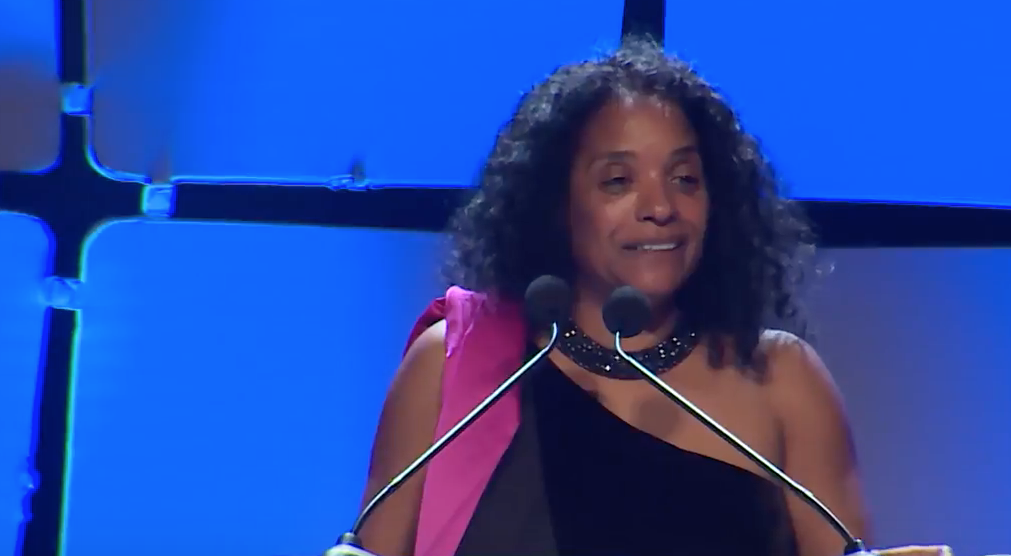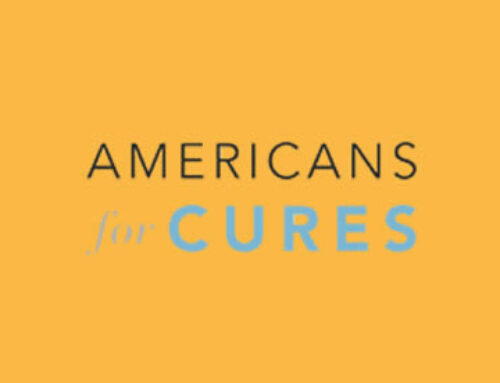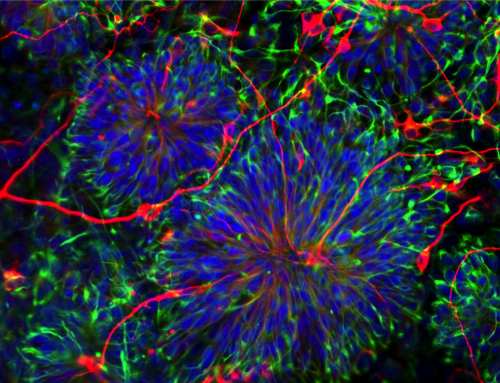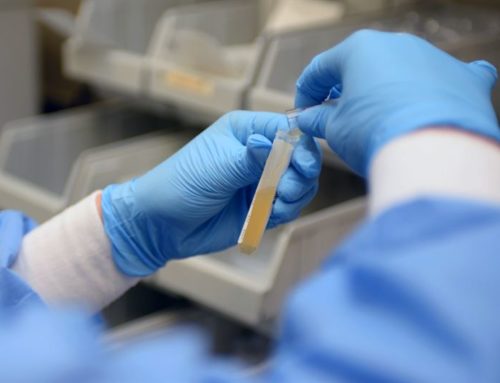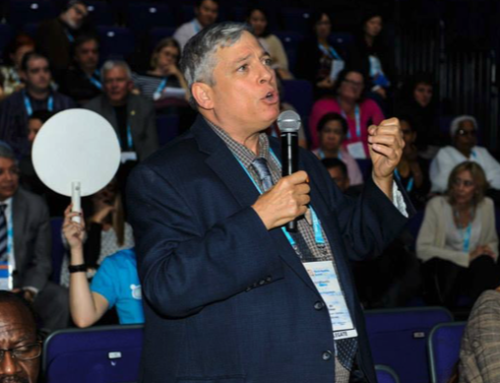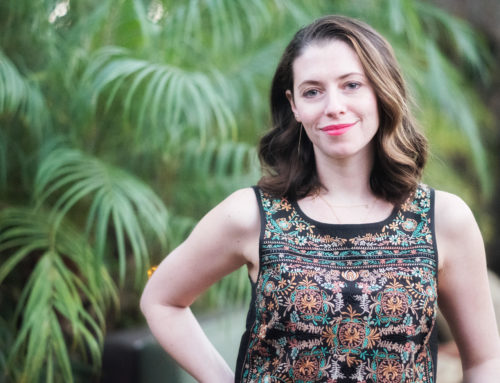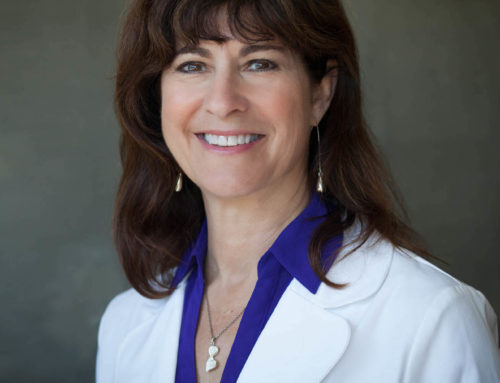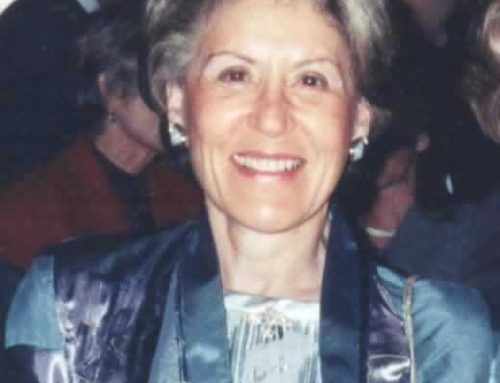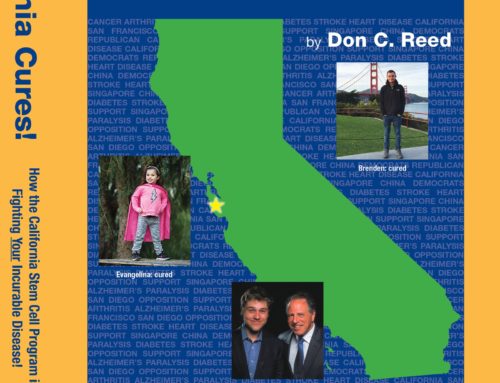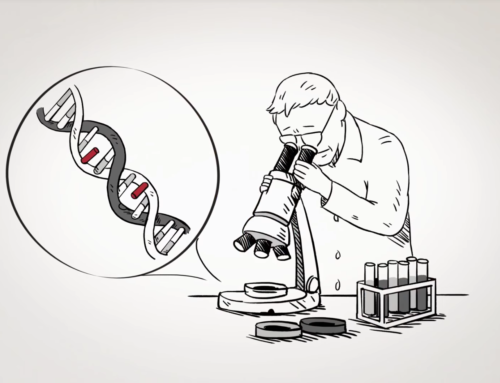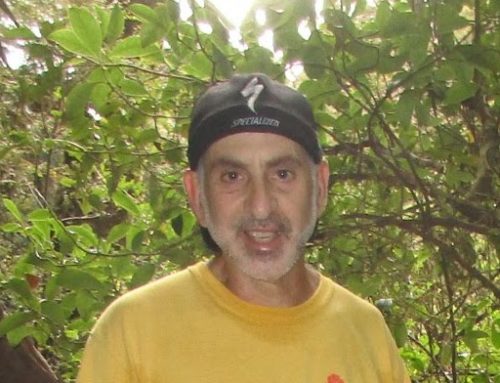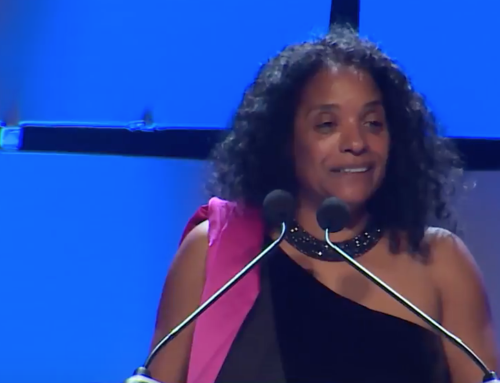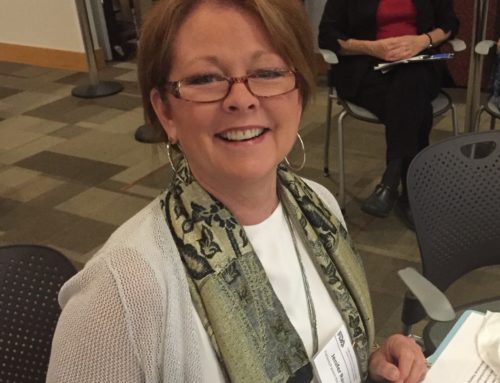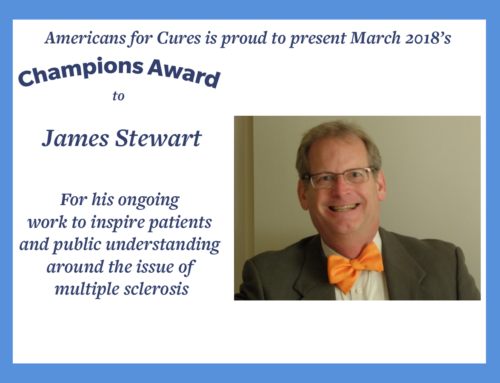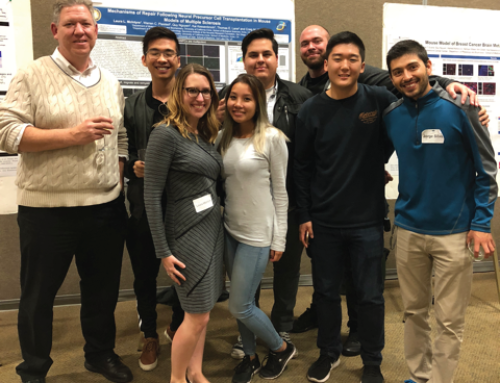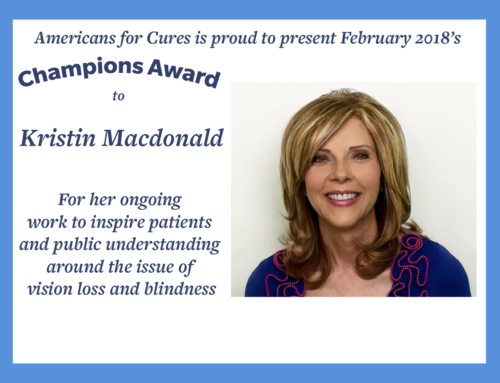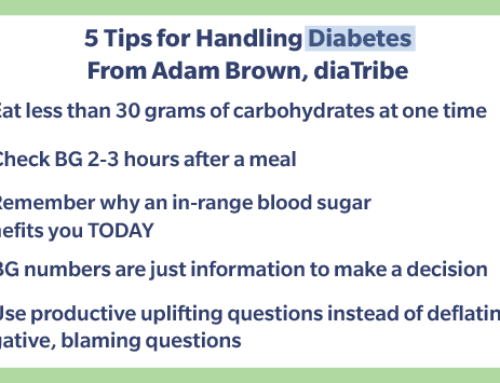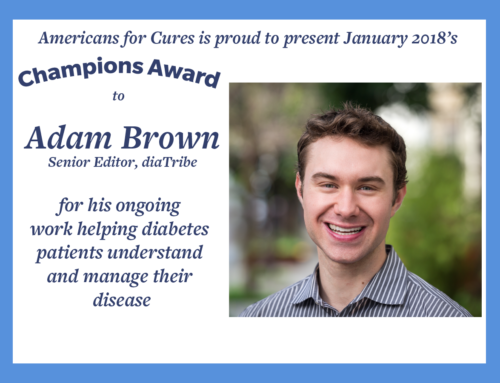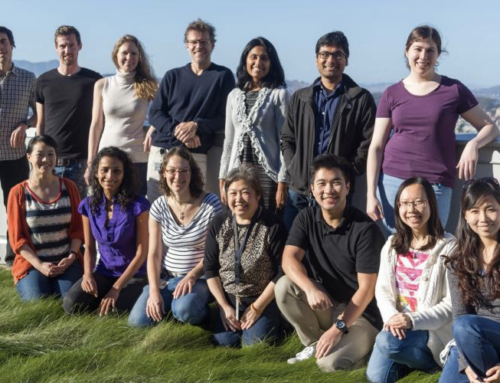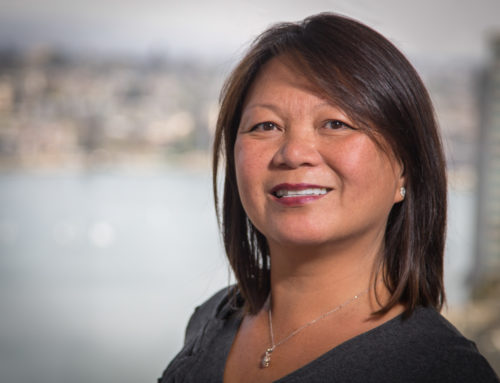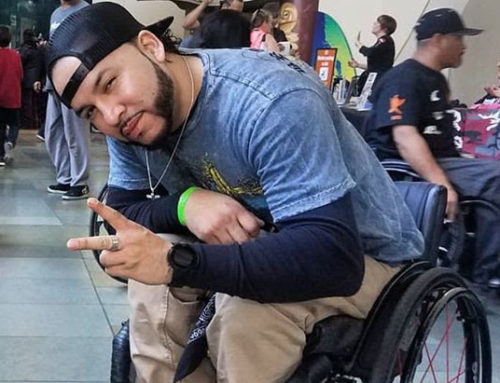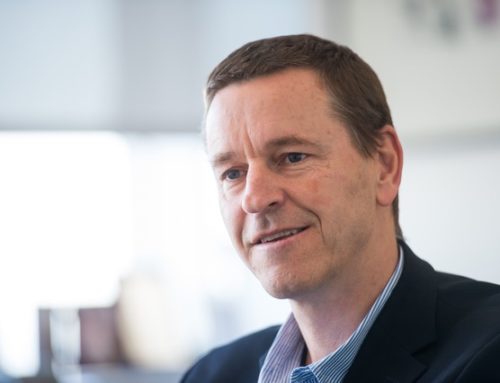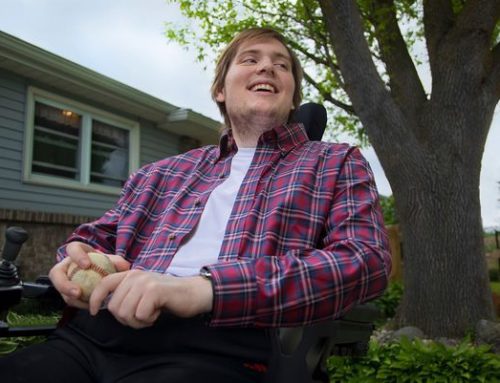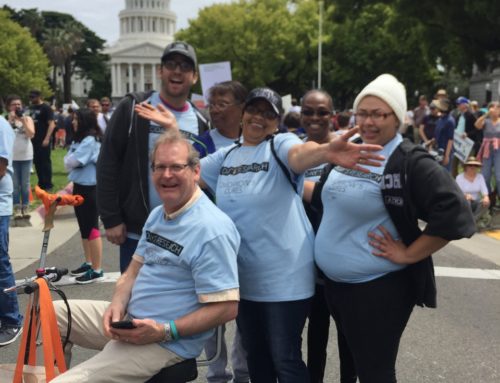Imagine if you went home from work and found one of your family members—your wife, husband, maybe your child—changing into somebody else?
Sound like one of those 1950’s monster movies, “I Married a Monster from Outer Space”? Unfortunately, this is grim reality.
This year, one in ten thousand Americans will be diagnosed with Huntington’s disease (HD), one of the most vicious conditions imaginable.
Emotionally, physically, and mentally, Huntington’s disease changes people, and not for the better. Depression, loss of muscle control, even “forgetting” how to swallow: these are marks of the devastating brain disease. It is a slow death, perhaps 15-20 years of suffering, but it is, right now, unstoppable.
Frances Saldana knows Huntington’s on the most deeply personal level.
Her husband Hector had the condition, until he died struck down by a car as he walked awkwardly across a street. Their daughter Marie, institutionalized with HD, became friends (all unknowing) with the woman whose car struck Hector. Frances did not want to interfere with her daughter’s happiness, and never told; Marie died never knowing her friend had accidentally killed her father.
Hector died, and Marie died, and Margie, too, Margie whom I once heard speak before the California stem cell program’s leadership board. She spoke about the need to fight Huntington’s. Her arms moved uncontrollably; she repeated herself as she talked. But still she fought, and still she spoke, and she gave her message.
As this article was begun, Frances’ son Michael, was in a coma.
Just now, as these pages concluded, I received an email from Frances: “Michael’s struggle with Huntington’s is over.” Her husband, gone. Her children, gone.
Talk to any Huntington’s family, and you will hear a similar story.
What is to be done? Frances is the shining example: living the advocate’s battle, fighting the disease, raising money toward its defeat.
She puts on entertainments as fundraisers, including the upcoming:
“SOUNDS OF BROADWAY: a fundraiser to support Huntington’s Disease Research: Sunday, October 1st. 1:00-4:30 pm, THE CENTER CLUB, 650 Town Center Dr., Costa Mesa, California. Contact: franceshdcare@gmail.com.
I have done a few fundraisers in my day, and the most I ever raised in one night was $4,000. Frances has raised as much as $70,000 at an event, all of which goes to the research.
But these are thousands of dollars, and millions are needed. That is why the California stem cell program (CIRM for short) is so vitally needed.
At last count, the CIRM has dedicated nearly $29 million ($28,905,757.00) for research to alleviate and eventually cure Huntington’s Disease.
Ms. Saldana got a job at UC Irvine, one of the most respected research institutions in the world.
There she met Dr. Leslie Thompson, who has worked nearly 30 years to find a cure for Huntington’s.
Yesterday I called Dr. Thompson, who was excited about her team’s progress—on a grant from the California stem cell program.
Dr. Thompson is using stem cells to fight the disease three ways: study, protection of the good brain cells, and replacement of those that don’t work or are lost.
Using skin cells taken from Huntington’s patients, and a cocktail of chemicals, Dr. Thompson and her colleagues have generated HD stem cell lines. With this “disease in a dish”, it is possible to study the effects of different medicines on the cells and see what works, without endangering a human.
The project involves embryonic stem cells, which can be changed (differentiated) into nerve stem cells. If these healthy cells were transplanted into the brain of a person with HD, they might protect patient nerves from being destroyed, blocking the build-up of the protein that causes Huntington’s— and perhaps replace the damaged cells at the same time.
By so doing, Dr. T. intends to study the disease in a controlled manner, provide neuroprotection to the brain, and replace the needed cells.
This three-pronged approach might not only help defeat HD but other nerve-damage diseases like ALS (for which her colleague Clive Svendsen received FDA permission to begin clinical trials, and is currently enrolling patients for the study), or Alzheimer’s disease, or Parkinson’s and/or others.
She has gathered a team of experts, tops in their field: champions like Mathew Blurton-Jones, Ed Monuki, Steven Cramer, and Neal Hermanowicz of UCI; Michael Levine and Marie-Francois Chesselet of UCLA; Clive Svendsen of Cedars-Sinai Medical Center; and Gerhard Bauer of UC Davis. (UC Davis deserves a book of its own; under the leadership of Dr. Jan Nolta, their Institute for Regenerative Medicine is a world-class center, with a strong anti-Huntington’s effort; see Chapter 44 in my previous book, “STEM CELL BATTLES”.)
The group is partnering with global biotech companyTerumo BCT, and BioTime, Inc., (begun by stem cell pioneer, Mike West) which is providing the cells. These will be expanded at the Good Manufacturing Practices (GMP) facility at UC Davis.
The work will be headquartered at the magnificent Sue and Bill Gross Stem Cell Research Center at UC Irvine.
Dr. Thompson warned me not to get too excited, and I understand her scientific caution. All it takes is one small detail to be incorrect, and a therapy may not work. But here we have top-notch people, a powerful approach to stem cell research, possible application to other diseases—and, at this moment in time, the funding.
And on Dr. Thompson’s desk? A framed photograph of Frances Saldana and her family. “They inspire me every day,” she says.
No one can predict the path of science. No one can say when cure will come.
But I know what my heart tells me.
If the California stem cell program remains funded and free, we will cleanse the earth of this vile disease.
This post originally appeared on HuffPost.
Don C. Reed is Vice President of Public Policy for Americans for Cures, and he is the author of the forthcoming book, CALIFORNIA CURES: How California is Challenging Chronic Disease: How We Are Beginning to Win—and Why We Must Do It Again! You can learn more here.



